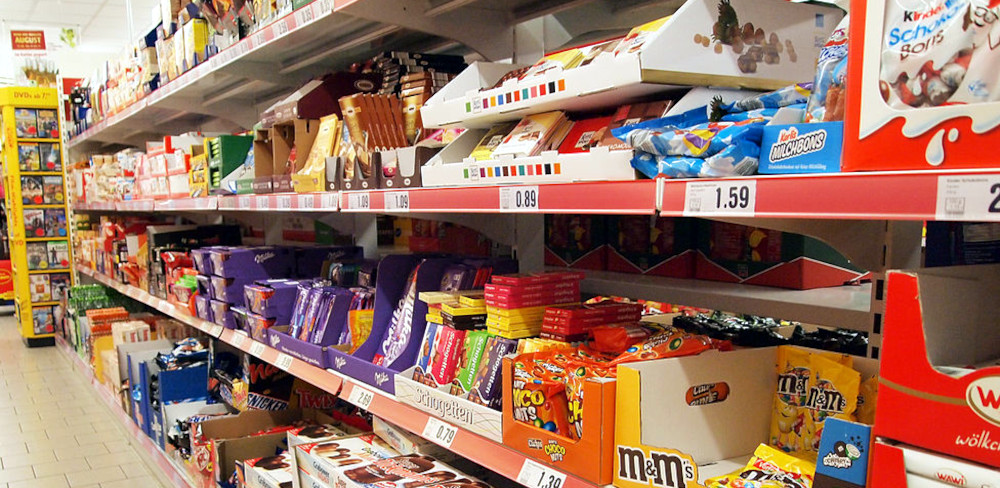The fifth edition of the Chocolate
Scorecard, released Wednesday,
reveals that — while the industry is undergoing significant improvement — key,
systemic issues such as farmer poverty remain a challenge. However, the
chocolate industry — which is expected to
generate
around US$254 billion in 2024 and whose forecasted revenue growth stands at 5.6
percent, surpassing global economic growth estimates of 2.6 percent — has ample
resources to address these challenges.
“Chocolate is a sweet treat that we often share with people we love to celebrate
a special occasion or indulge in a sweet moment. But usually, the conditions in
which it’s made are far from sweet,” Be Slavery
Free said in a
statement.
“When cocoa farmers and their communities live in poverty, they deforest to
clear more land to grow more cocoa. They rely on family and unpaid labor (child
labor and forced labor) to make ends meet. As a result, our environment is
harmed and children’s future opportunities are squandered to survive.”
The Chocolate Scorecard initiative, coordinated by Be Slavery Free in
collaboration with an international team of over 40 collaborators — including
NGOs EcoCare Ghana and Mighty
Earth; along with Macquarie University, Open
University and University of Wollongong — aims to promote transparency,
accountability and responsible practices within the industry. By evaluating
companies on social and environmental criteria, the Chocolate Scorecard provides
valuable information for consumers to make ethical purchasing decisions and
incentivizes companies to improve their performance in these areas.
Antonie Fountain, Managing Director at
VOICE Network, which publishes the Cocoa
Barometer, told Confectionery
News:
“The Scorecard is the best ranking in the cocoa sector I know of, with an open
and transparent methodology that just gets better every year. More than 60
companies worldwide were ranked across a range of sustainability criteria,
including child labor, deforestation, livelihoods, and — for the first time —
gender equality.”
Good eggs and bad eggs
 Image credit: Original Beans
Image credit: Original Beans
The Scorecard evaluates global chocolate traders, manufacturers, brands and
retailers against seven markers:
-
Traceability and Transparency
-
Living Income
-
Child Labour
-
Gender Equality
-
Deforestation and Climate
-
Agroforestry
-
Agri-Chemical Management.
A traffic light “egg” system is used to rank retailers, brands and manufacturers
— in descending order: green, yellow, orange, red or grey (for companies that
declined to take part or did not respond to the questionnaire) for their overall
progress in these categories. Retailers are assessed on their own-branded or
private-label products.
This year, 63 companies, manufacturers and retailers were assessed: 38 medium
and large chocolate companies — including Ferrero, Hershey’s, Mars
Wrigley, Mondelēz (maker of Cadbury), Nestlé, Tony’s
Chocolonely and Unilever; nine boutique chocolate brands — including
organic, Fair Trade Certified brand Alter
Eco, single-origin chocolate maker Beyond
Good and regenerative chocolate maker Original
Beans; and 16 retailers — including
Aldi,
Carrefour, Coles, Sainsbury’s, Tesco and Woolworths. Due to
their lack of transparency or participation, four companies and 18 retailers
earned a grey rating.
Three ‘Good Egg’ awards were given to two small companies — Beyond Good and
Original Beans — and to large company Ritter Sport. Tony’s
Chocolonely
was given an Achievement Award for leading the industry in policy and practice
for five years in a row. Globally, no retailer scored a green rating.
According to the Scorecard, a majority of respondent companies recognize a
living
income
as a basic human right (83 percent) — yet, only six companies are paying 100
percent of their farmers a Living Income Reference
Price.
Legislation such as the EU’s Deforestation and Human Rights Due Diligence
Regulations
— along with growing consumer
awareness,
which has led to demand for ‘better’ chocolate — is driving positive change in
the industry. But is change happening fast enough to ensure enough compliant
cocoa to satisfy our global chocolate craving?
“The chocolate brands doing the most to prevent deforestation in their cocoa
supply chains are leading the way on both traceability and living income,” said
Dr Julian Oram, Senior
Policy Director at Mighty Earth. “You can’t help cocoa farmers protect forests
unless you first know who those farmers are, and then reward them for growing
cocoa sustainably. Companies like Tony’s and Ritter are showing where the whole
industry needs to go.”
A retail vacuum
 Image credit: Wikimedia
Image credit: Wikimedia
On the flipside, more than half of the retailers assessed were given grey eggs
for lack of transparency or response.
University of Wollongong Associate Professor Stephanie
Perkiss
said
retailers that place their private label on chocolate
products
have as much responsibility as big manufacturers to ensure transparency and
accountability in their supply chain and sustainability practices.
“A number of retailers have told us that cocoa is not a significant part of
their business. Yet, chocolate and confectionary are extremely prominent in
supermarkets — you cannot visit these supermarkets without finding chocolate at
the checkout or the end of the aisle. If chocolate does not generate big
profits, why do they place it in prominent sales locations?
“When a retailer has their own-branded chocolate product, they have the same
obligations as others in the supply chain to undertake the required due
diligence to address human rights and environmental issues. In fact, you could
argue that they have more responsibility — as a larger portion of the profits go
back to the retailer.
“A company that lacks knowledge of its cocoa’s origin cannot genuinely ensure it
is not tainted by extreme poverty, child labor, deforestation, or other abuses.
Put simply if you can’t see it, you can’t fix it.”
Key takeaways
-
Improvements in traceability are evident in response to EU Deforestation
Regulations (EUDR); yet, achieving full EUDR compliance remains a work in
progress. As companies focus on their supply chains, there is a risk that
farmers may not receive the necessary support they require.
-
Companies are increasingly aware of their responsibility to ensure farmers
get a decent income from cocoa, but still too many farmers remain in
poverty. Without additional financial support, this will continue.
-
Child labor responses are increasing in effectiveness, but the road to
elimination is still fraught — mainly due to lack of scale of programs. To
eradicate it in all supply chains, there must be traceability and a focus on
addressing the root causes — such as poverty — that lead to its prevalence.
-
Environmental initiatives (such as climate targets, ending deforestation and
use of agroforestry) are gaining momentum — in part, due to emerging
legislation (particularly in the EU).
-
While many companies have policies on pesticide management, this hasn’t
resulted in enough action on the ground. Overall, significant reductions in
pesticide use were not observed.
-
Governments, NGOs, companies and consumers must work together to ensure that
farmers are supported in meeting the necessary requirements for EUDR
compliance and are compensated fairly for their efforts.
-
It will take a concerted effort from all stakeholders to achieve these
goals, but the future of the industry and the planet depends on it.
Get the latest insights, trends, and innovations to help position yourself at the forefront of sustainable business leadership—delivered straight to your inbox.
Sustainable Brands Staff
Published Mar 21, 2024 8am EDT / 5am PDT / 12pm GMT / 1pm CET